Makindo Medical Notes"One small step for man, one large step for Makindo" |
|
|---|---|
| Download all this content in the Apps now Android App and Apple iPhone/Pad App | |
| MEDICAL DISCLAIMER: The contents are under continuing development and improvements and despite all efforts may contain errors of omission or fact. This is not to be used for the assessment, diagnosis, or management of patients. It should not be regarded as medical advice by healthcare workers or laypeople. It is for educational purposes only. Please adhere to your local protocols. Use the BNF for drug information. If you are unwell please seek urgent healthcare advice. If you do not accept this then please do not use the website. Makindo Ltd. |
The Carotid Artery
-
| About | Anaesthetics and Critical Care | Anatomy | Biochemistry | Cardiology | Clinical Cases | CompSci | Crib | Dermatology | Differentials | Drugs | ENT | Electrocardiogram | Embryology | Emergency Medicine | Endocrinology | Ethics | Foundation Doctors | Gastroenterology | General Information | General Practice | Genetics | Geriatric Medicine | Guidelines | Haematology | Hepatology | Immunology | Infectious Diseases | Infographic | Investigations | Lists | Microbiology | Miscellaneous | Nephrology | Neuroanatomy | Neurology | Nutrition | OSCE | Obstetrics Gynaecology | Oncology | Ophthalmology | Oral Medicine and Dentistry | Paediatrics | Palliative | Pathology | Pharmacology | Physiology | Procedures | Psychiatry | Radiology | Respiratory | Resuscitation | Rheumatology | Statistics and Research | Stroke | Surgery | Toxicology | Trauma and Orthopaedics | Twitter | Urology
Related Subjects: Carotid Artery Dissection | Carotid Body Tumour | Carotid Endarterectomy | Carotid Sinus Syncope | Carotid Stenting | Carotid sinus massage
Overview of the Carotid Artery
The carotid arteries are major blood vessels in the neck that supply blood to the brain, neck, and face. There are two main carotid arteries: the left and right common carotid arteries, each branching into internal and external carotid arteries.
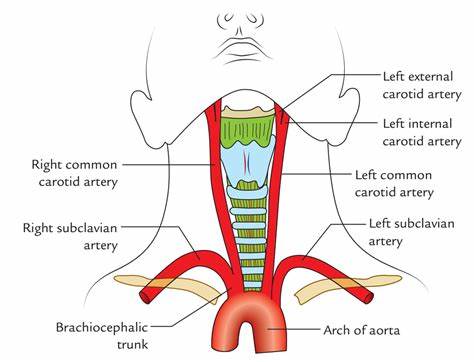
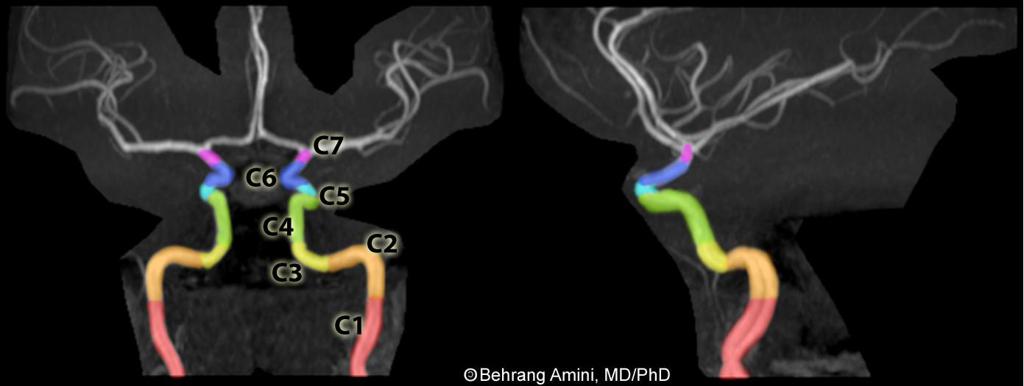
Anatomy of the Carotid Arteries
- Common Carotid Artery :
- Origin: The right common carotid artery arises from the brachiocephalic trunk, while the left common carotid artery arises directly from the aortic arch.
- Course: Ascends in the neck within the carotid sheath, alongside the internal jugular vein and the vagus nerve.
- Bifurcation: Divides into the internal and external carotid arteries at the level of the fourth cervical vertebra (C4).
- Internal Carotid Artery :
- Course: Ascends through the neck without branching until it enters the cranial cavity through the carotid canal in the temporal bone.
- Function: Supplies blood to the brain and eyes.
- Branches: Includes the ophthalmic artery, anterior cerebral artery, middle cerebral artery, and others within the brain.
- External Carotid Artery :
- Course: Ascends in the neck and branches extensively to supply the face, neck, scalp, and jaw.
- Branches: Includes the superior thyroid artery, lingual artery, facial artery, occipital artery, posterior auricular artery, ascending pharyngeal artery, maxillary artery, and superficial temporal artery.
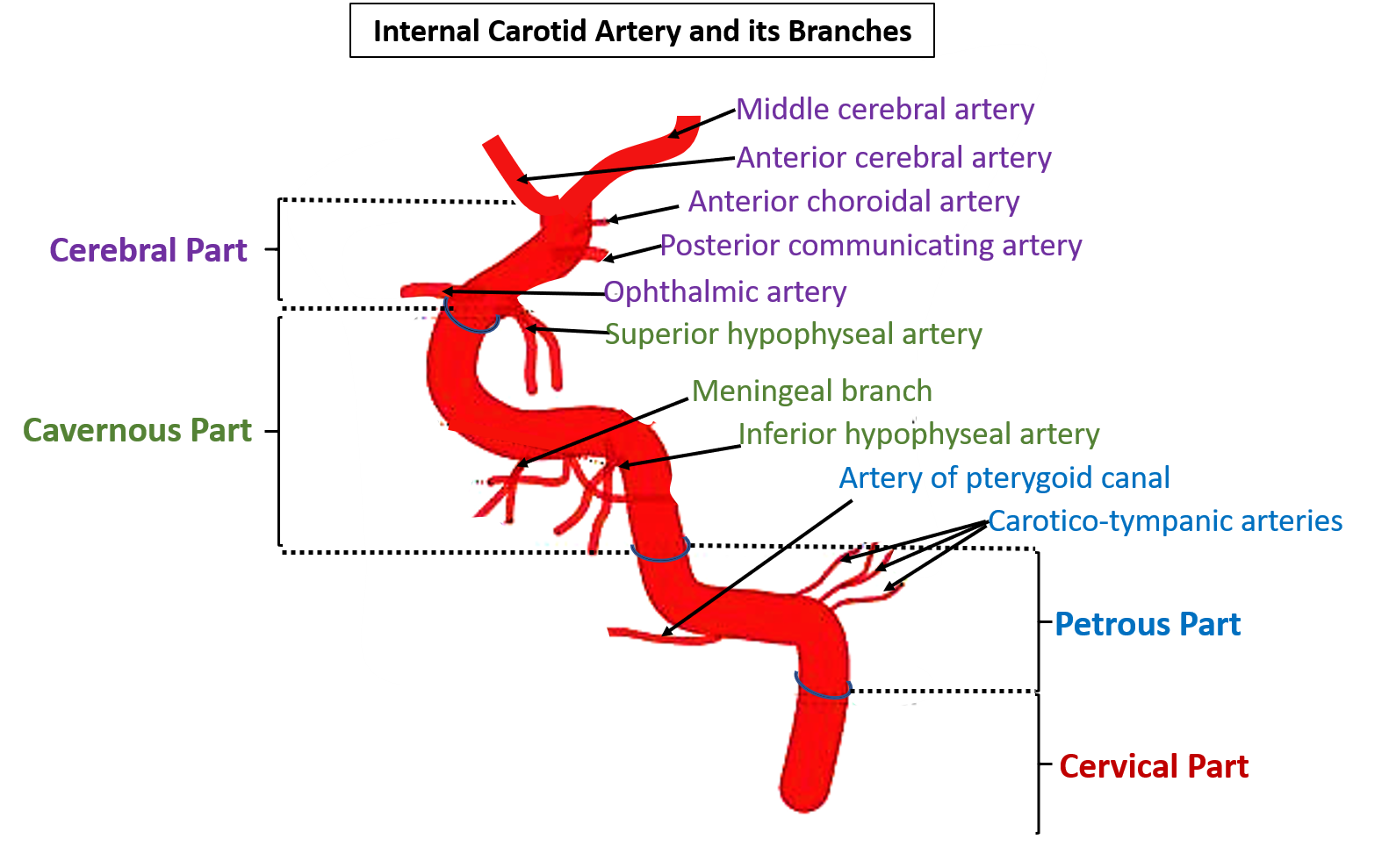
Functions of the Carotid Arteries
- Blood Supply to the Brain :
- The internal carotid arteries are crucial for providing oxygenated blood to the brain, ensuring proper brain function.
- Blood Supply to the Face and Neck :
- The external carotid arteries supply blood to the face, neck, scalp, and upper jaw, supporting tissues and organs in these regions.
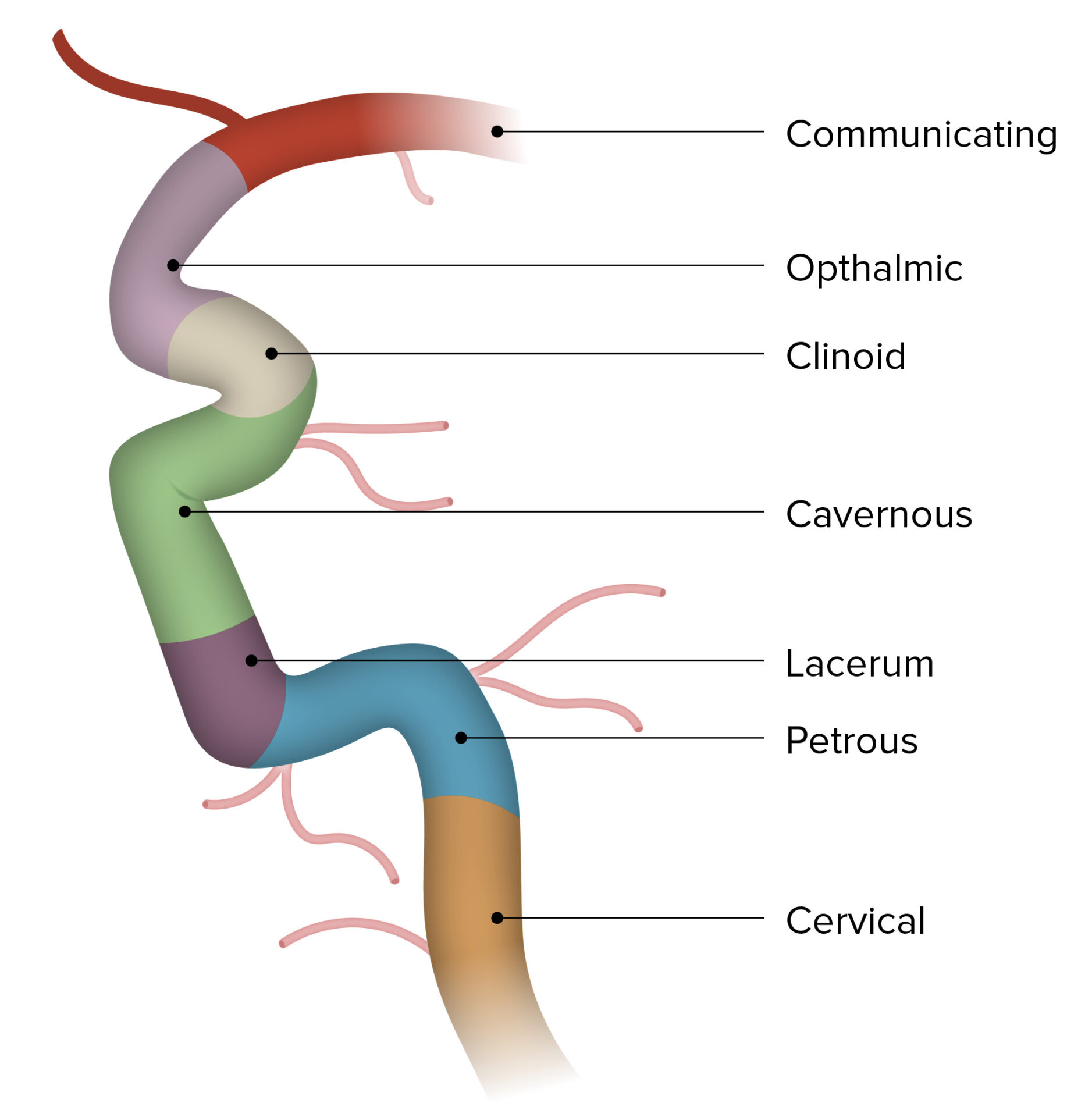
Clinical Relevance
- Carotid Artery Stenosis :
- Narrowing of the carotid arteries due to atherosclerosis, leading to reduced blood flow to the brain.
- Symptoms: May be asymptomatic or cause transient ischaemic attacks (TIAs) and strokes.
- Diagnosis: Doppler ultrasound, CT angiography, or MRI angiography.
- Treatment: Includes lifestyle changes, medications, and surgical procedures such as carotid endarterectomy or carotid artery stenting.
- Carotid Artery Dissection :
- A tear in the artery wall, leading to blood accumulation between the layers and possible obstruction of blood flow.
- Symptoms: Sudden headache, neck pain, and neurological deficits.
- Diagnosis: MRI or CT angiography.
- Treatment: Anticoagulation therapy, monitoring, and sometimes surgical intervention.
- Carotid Body Tumour :
- A rare, usually benign tumour located at the bifurcation of the common carotid artery.
- Symptoms: A painless, slowly enlarging mass in the neck.
- Diagnosis: Ultrasound, CT scan, or MRI.
- Treatment: Surgical removal is often recommended.
- Stroke :
- Interruption of blood flow to the brain, often due to emboli from carotid artery plaques.
- Symptoms: Sudden weakness, numbness, confusion, trouble speaking, vision problems, and loss of coordination.
- Prevention: Control of risk factors such as hypertension, diabetes, smoking, and high cholesterol.
Evaluation and Diagnosis
- Physical Examination :
- Palpation and auscultation of the carotid arteries to detect bruits indicating turbulent blood flow.
- Imaging Studies :
- Doppler ultrasound to assess blood flow and detect stenosis.
- CT angiography and MRI angiography for detailed imaging of the carotid arteries.
- Conventional angiography for detailed evaluation, often used when planning surgical interventions.
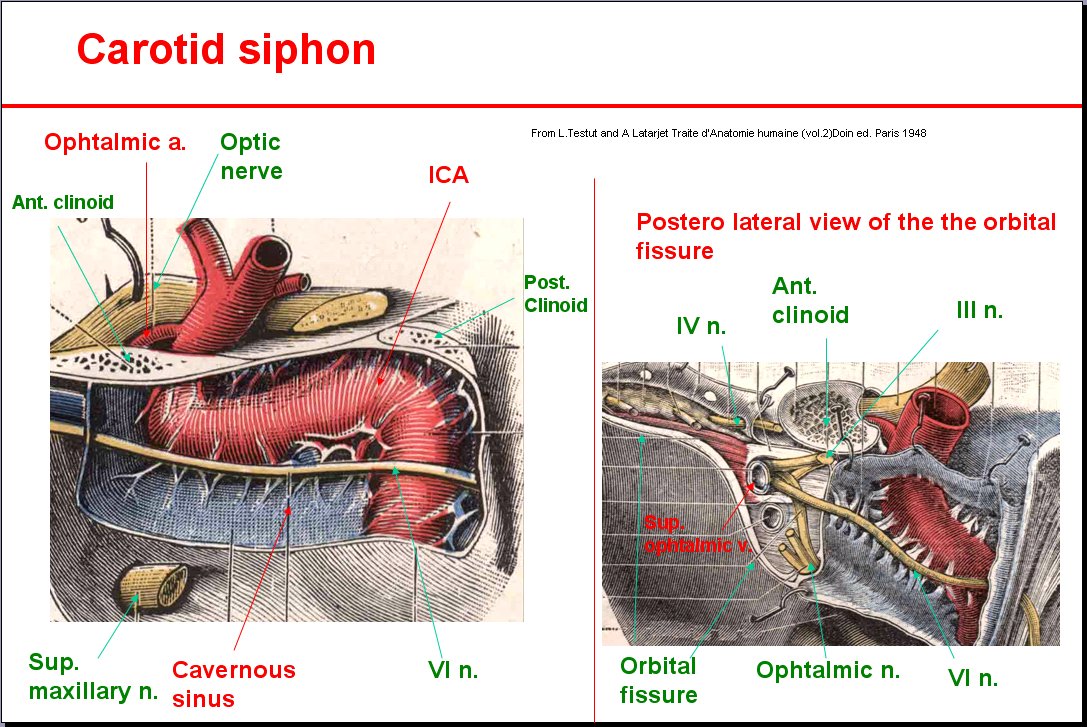
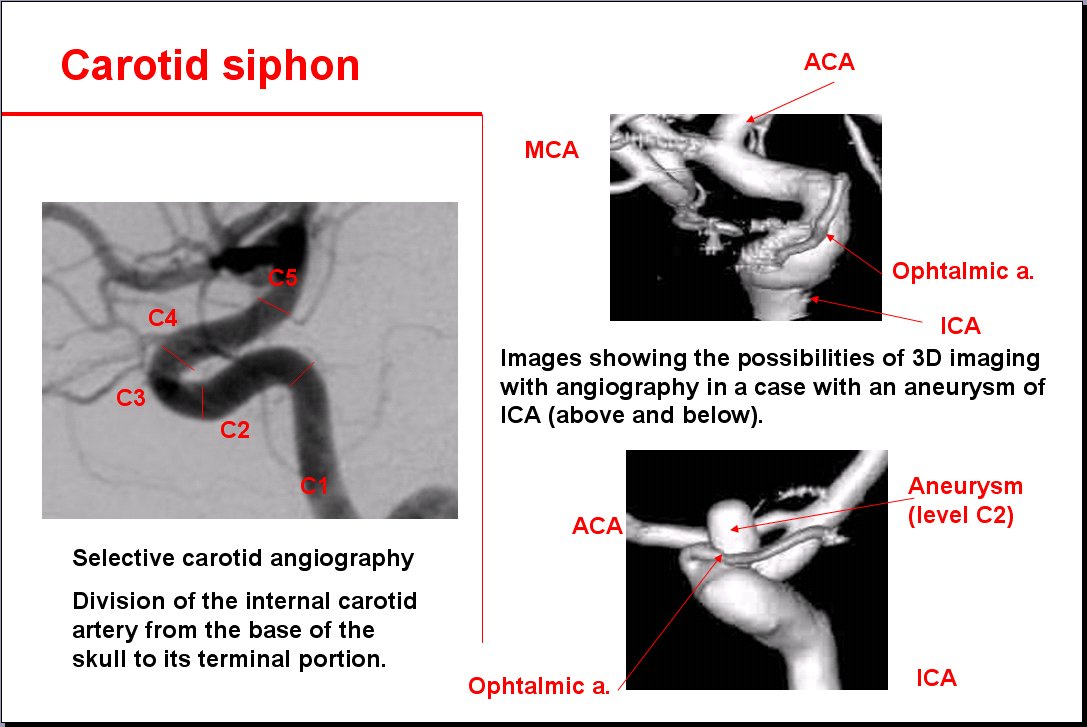
Summary
The carotid arteries are vital blood vessels that supply oxygenated blood to the brain, face, and neck. The common carotid artery bifurcates into the internal and external carotid arteries, each with distinct courses and branches. Understanding the anatomy and function of the carotid arteries is crucial for diagnosing and managing conditions such as carotid artery stenosis, dissection, tumours, and stroke. Regular evaluation and appropriate treatment can help prevent serious complications associated with carotid artery disorders.